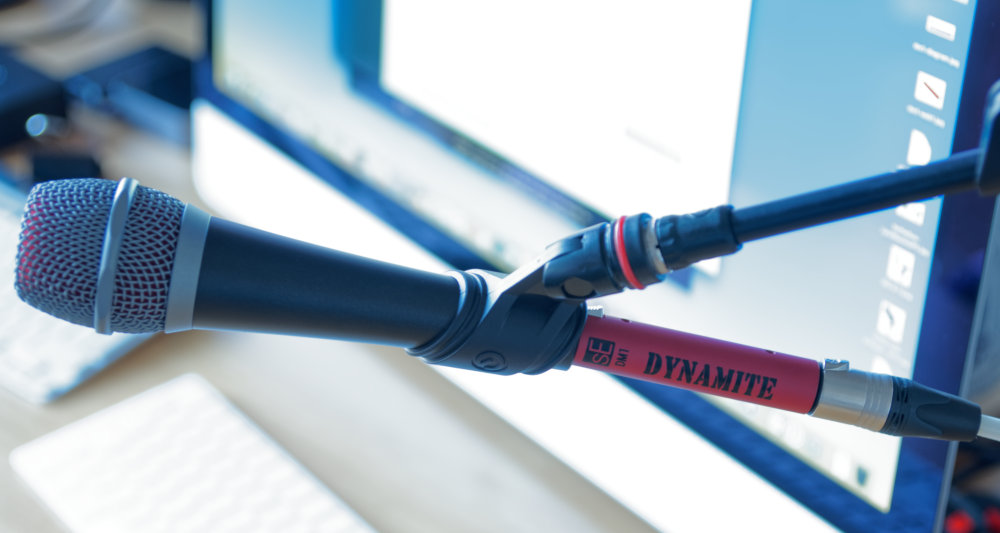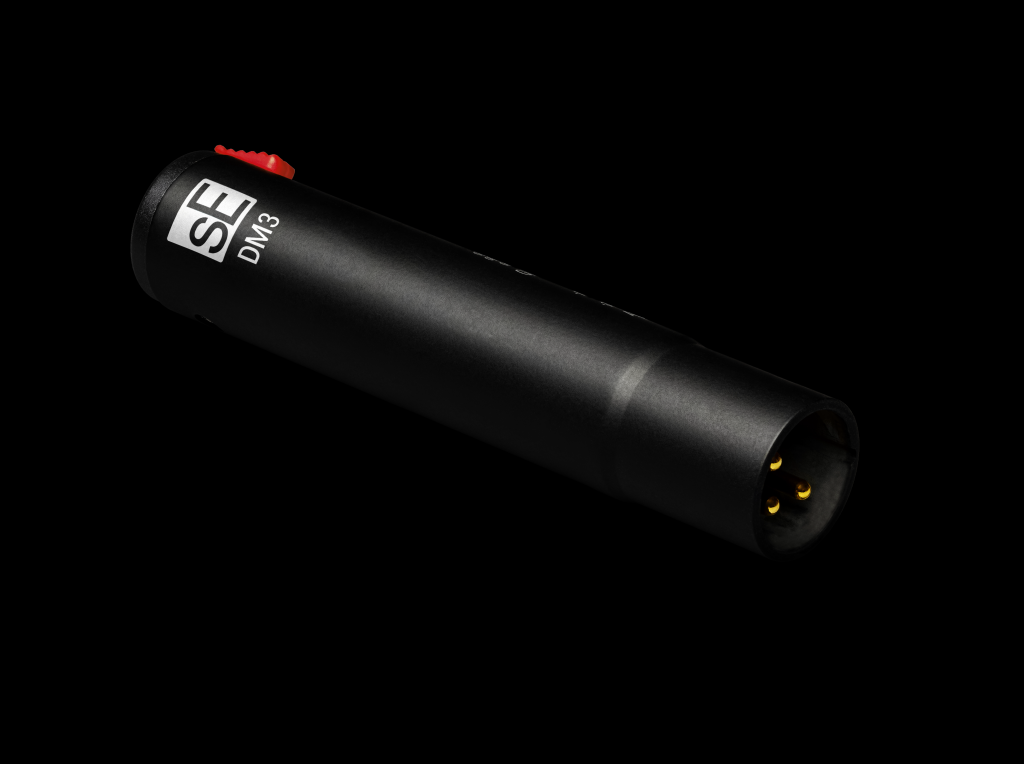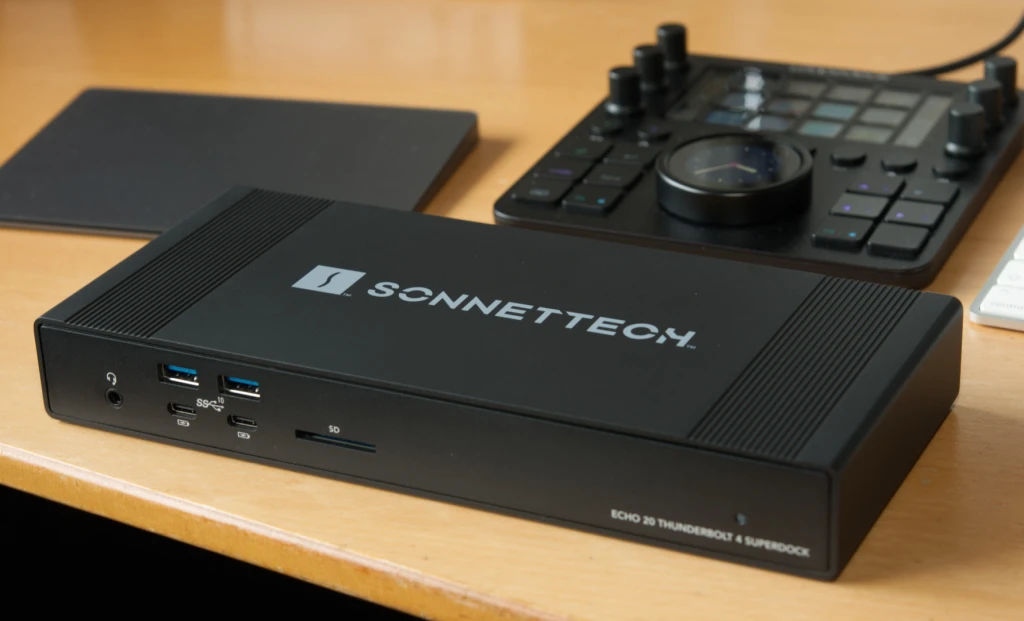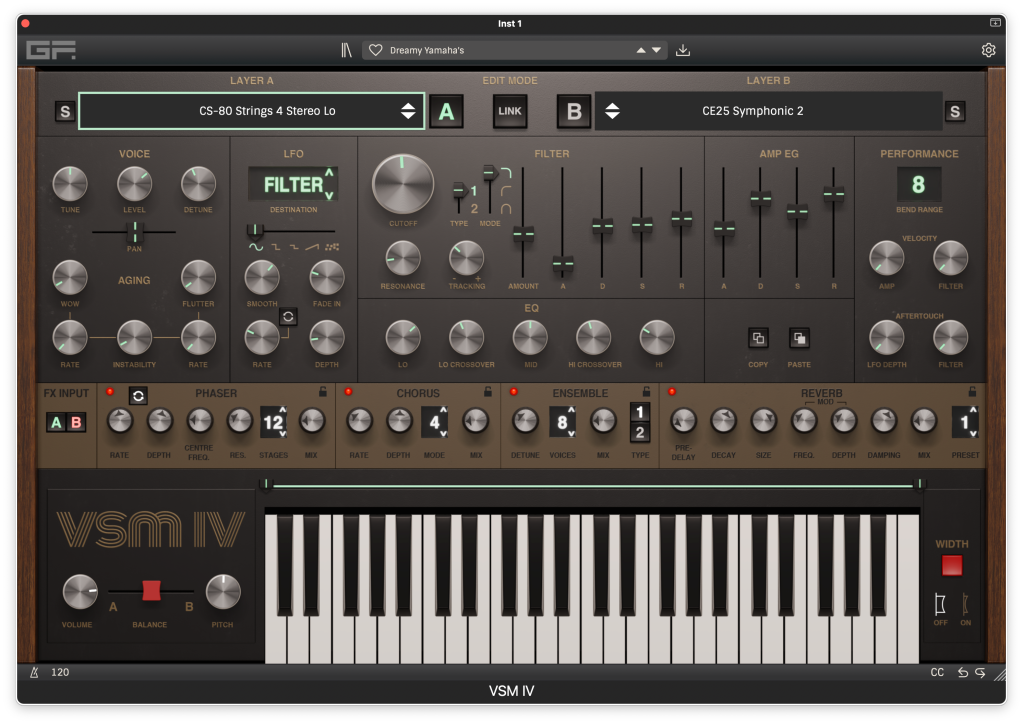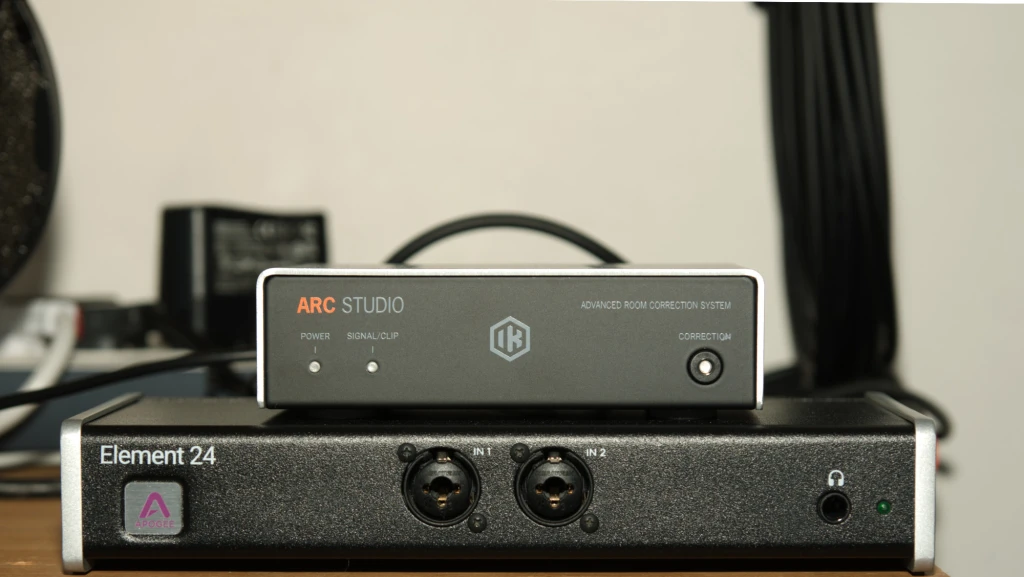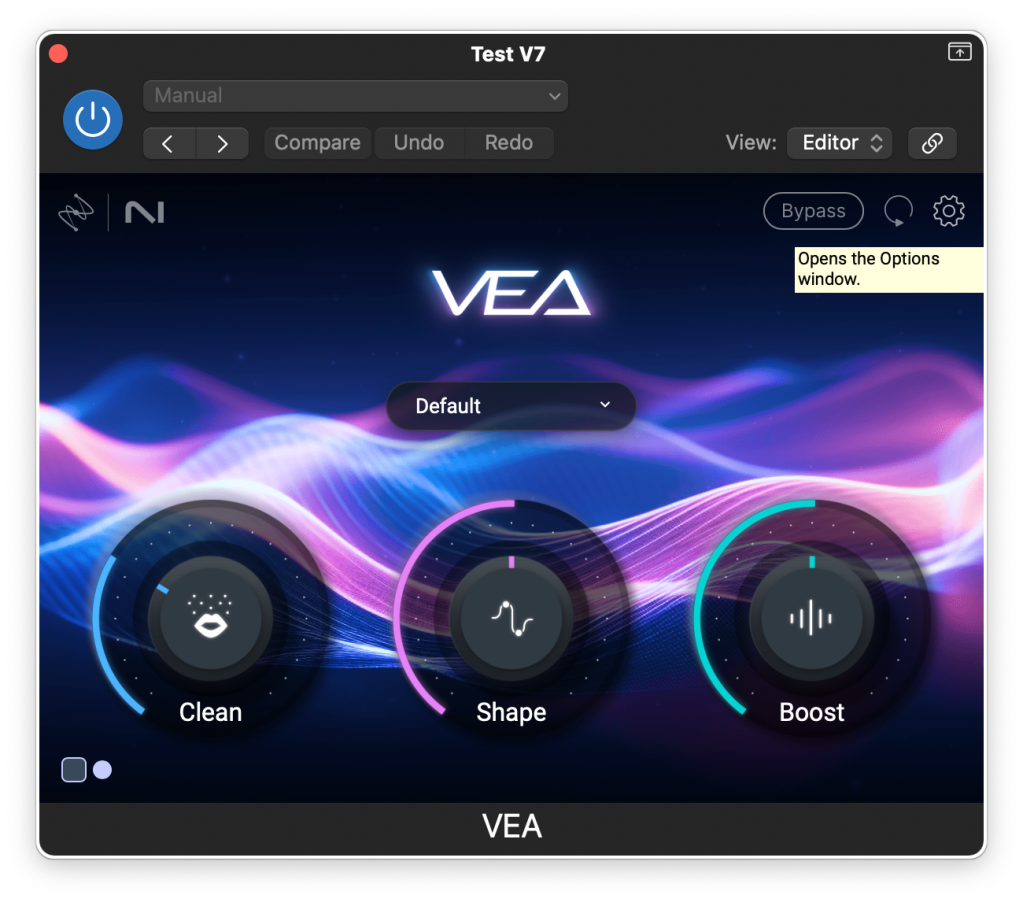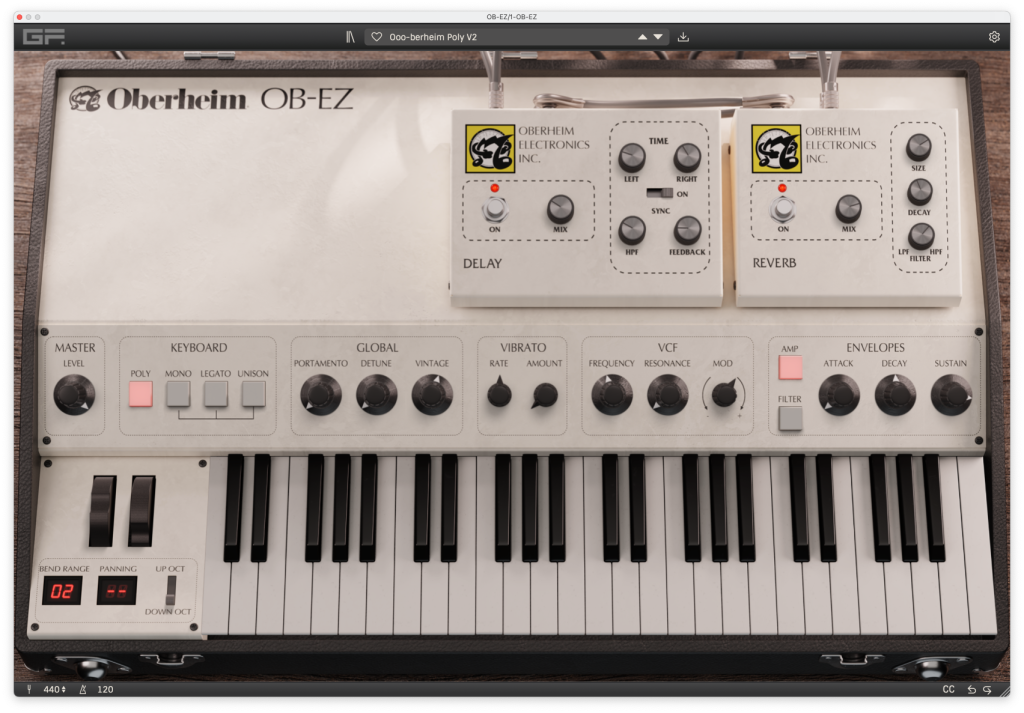Almost a year ago, I purchased an sE Electronics V7 dynamic microphone, assuming it would be a great microphone to have for creating videos on Youtube or Vimeo. At the time, I didn’t realise I would have to “eat” the microphone or crank up the gain to a whopping 75dB on my Apogee Duet iOS/Mac in order to get a decent signal. As a result, I only used the mic occasionally. A week or so ago, I discovered the DM1 Dynamite preamp on the sE Electronics website that claims to solve exactly this problem.
The DM1 Dynamite looks like a long red XLR plug converter. Ideally, you should mount it as close to the microphone as you can. On my V7 it’s inserted directly in its XLR socket. The specs of the device are pretty impressive.
The Dynamite supports a frequency range of 10Hz to 120,000Hz (-0.3 dB), has a maximum output level at 0.5% THD of 8.3dBV, an output noise level of 9microVolts, an electrical impedance of 135 Ohms and a recommended load impedance of over 1 kOhms. It weighs 80g and works only with passive microphones (ribbon or dynamic). It requires 48V phantom power but doesn’t transfer that to the mic.
And all this to crank up the gain with a nice 28dB (at a load of 1 kOhms) before the signal is fed to the preamp of your audio interface!
Now, as far as the noise is concerned I can safely say it’s non-existent in the audible frequency range. I did a spectrum analysis and found the unit actually does generate noise, but only in a range between 25,000Hz and 80,000Hz. In other words, it may drive your dog crazy, but we humans can’t hear it.
My second observation was that the sound characteristics of the V7 were completely unaltered by the DM1 Dynamite. The colouration, warmth, clarity, it all sounded the same as without the DM1.
What was most astonishing is that – in the monologue tests – although I was now speaking at a distance of about 20cm away from the V7, there was no additional noise from the environment except a little bit of what hit the V7 directly zero degrees on-axis. In fact, the V7 now behaved more like a shotgun with a very, very low noise floor than like a vocalist’s mic.
The third striking observation was that I could now set the Duet’s gain dial at 44dB instead of the usual 75dB without the DM1. At 75dB of gain, you can hear a faint hiss with the volume cranked up all the way to -5dB. That hiss was much less obvious with the DM1 Dynamite/Duet combination.
However, if I cranked up the gain on the Duet to 60dB, the hiss would become quite audible. On the bright side, the hiss was easily removed with RX 7 in post.
Conclusion
To me, sE Electronics’ DM1 Dynamite is like something from a Harry Potter world: a magic stick that adds or subtracts nothing to/from the original microphone and that allows you to place it at a comfortable distance.
Of course, there’s a disadvantage too: if you place a dynamic microphone at a distance, you can kiss a proximity effect goodbye. But in dialogue or presentation work the proximity effect isn’t desired.
The V7’s off-axis rejection – which is unsurpassed – was just as good with the Dynamite as without. The one thing that you could have to deal with is reverb when you’re recording in an untreated room.
The DM1 Dynamite may deliver a big gain, it’s even bigger in its proficiency to completely disappear from auditory perception and that’s what makes this thing a must-have with mics that are hard to drive.
In Europe and the UK, it’s currently available via Total Sonic B.V. in the Netherlands only as far as I could see. It costs €99.00.

